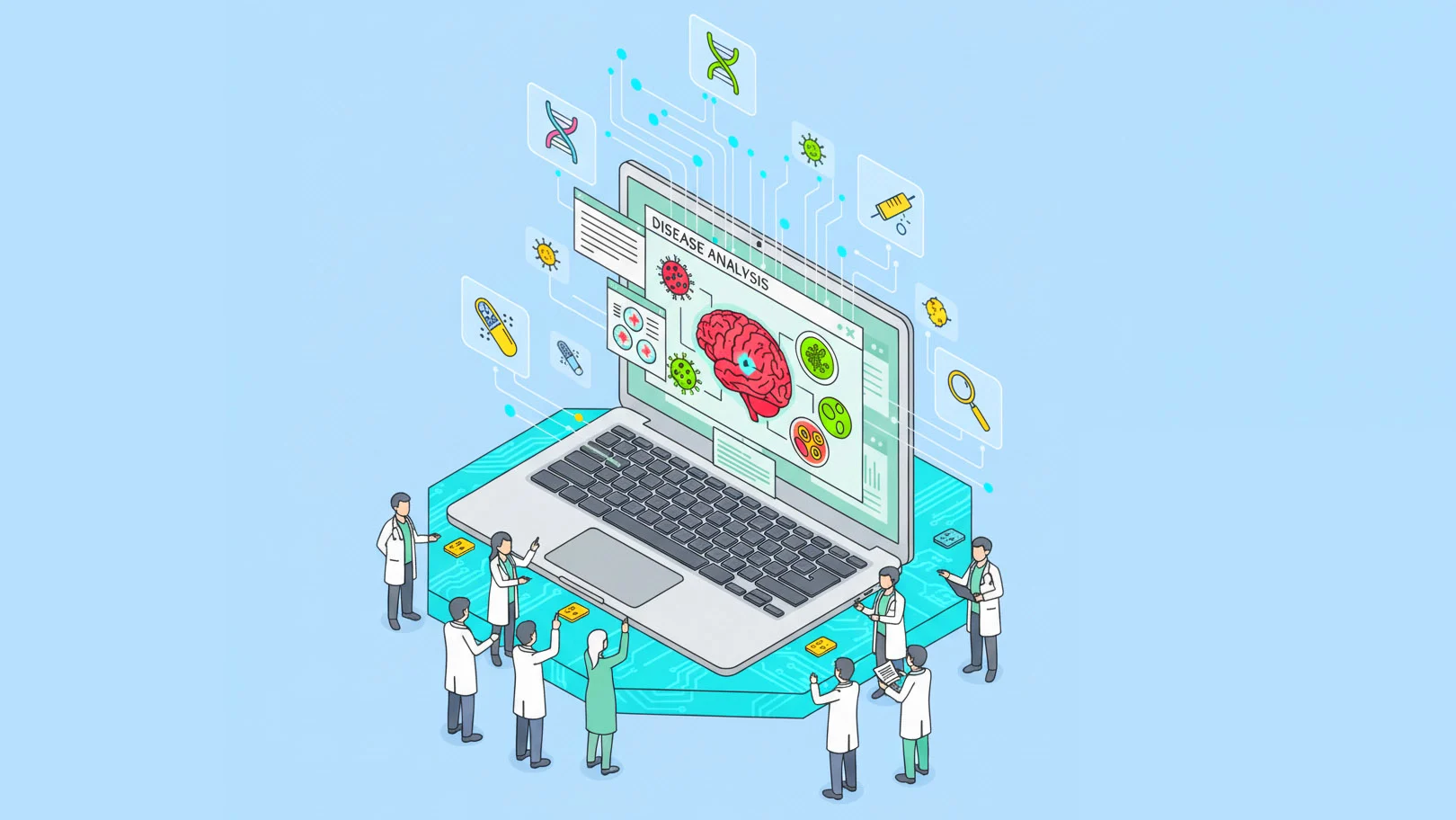
Overview
A look at AI tools that surface rare-disease patients from limited data—biomarker discovery, EHR scanning, and clinician assistants that aim to shorten the diagnostic delay.
A rare disease in the United States is defined as a condition affecting fewer than two hundred thousand people. Yet there are more than ten thousand known rare diseases, which together affect one in ten Americans.
Despite how widespread these conditions are collectively, access to reliable data remains a major barrier for researchers. Khartik Uppalapati, a 16-year-old entrepreneur and co-founder of the RareGen Youth Network, said limited data collection slows both research and innovation.
“It’s really hard to engage people to share data on their rare disease that could help inform better technologies and scientific research,” he told Cure in an interview.
This data scarcity is where AI is beginning to change what is possible. Uppalapati, for example, created BioRare, a biomarker identification tool that uses small data sets and large AI models to surface more accurate biomarker signals in rare diseases.
“It bridges the main gap within the rare disease research space right now,” he said.
RELATED: Where AI Is Winning in Healthcare—and What Startups Need to Know
Where AI Is Already Making an Impact
Below are several examples of AI tools shaping detection, diagnosis, and decision support in the rare disease space.
1. ThinkRare
ThinkRare is an AI-driven algorithm developed to scan pediatric patient records and flag potential rare genetic diseases so patients can receive genetic testing sooner.
The tool was developed by principal investigator Kym Boycott, MD, PhD, senior scientist at the CHEO Research Institute and chief geneticist at CHEO in Ontario, Canada.
“Getting kids in for genetic testing sooner can shorten their diagnostic odyssey by years,” Boycott said on CHEO’s website.
During the research stage, the algorithm contributed to a diagnosis in seventy percent of patients who were tested. Clinicians receive an alert in the EHR when a patient is flagged as potentially having an undiagnosed rare disease. Funding came from donors to the CHEO Foundation.
2. DxGPT
DxGPT is a large language model designed to help clinicians and families narrow rare disease diagnoses more quickly. The tool conducts a structured analysis of five diagnostic hypotheses and surfaces symptoms for and against each.
Founder Julián Isla built the tool while seeking a diagnosis for his infant son, who experienced repeated seizures and was later diagnosed with Dravet syndrome.
“We have turned a personal problem into something that can help others,” Isla told Microsoft. “It fills you with satisfaction. Being able to do something for others is rewarding.”
While working as a software engineer for Microsoft in Madrid, Isla co-founded Foundation 29 to leverage AI for rare disease innovation. A simple version of DxGPT was developed through the foundation and reached full capability in 2023, now hosted on Microsoft’s Azure Cloud.
The tool is free and publicly accessible, and Microsoft reports that DxGPT has been used by more than five hundred thousand people across the U.S., Europe, India, and China.
RELATED: How AI is Shrinking Biotech Workplaces
3. ZebraMD
ZebraMD is a clinical AI assistant built to improve recognition and management of rare disease. The platform consolidates rare disease literature and patient data, and integrates into EHR systems and patient portals to flag patients who may be at risk.
Founder and CEO Kat Schmolly, MD, was motivated by how often patients with rare diseases are overlooked or dismissed in clinical settings.
“The diagnostic delay is roughly ten to fifteen years for these diseases because physicians don’t see them very often,” she told UCLA. “While patients wait for answers, the disease can progress and cause irreversible damage. Our goal is to diagnose patients earlier and manage their disease appropriately.”
4. STARVar
STARVar (short for Symptom-based Tool for Automatic Ranking of Variants) is a gene prioritization algorithm that analyzes a patient’s symptoms and ranks the most likely gene variants. It incorporates background literature, genomic data, and individual clinical records to identify the probable cause of disease.
The method was developed by computer scientist Robert Hoehndorf and colleagues at King Abdullah University of Science and Technology (KAUST), supported by the KAUST Office of Sponsored Research.
Șenay Kafkas, a bioinformatics researcher at KAUST and first author of the published report on STARVar, told EurekAlert! that the tool “is one that will shed light on rare diseases and provide vital diagnostic support to clinicians and affected families.”
AI’s Growing Role in Rare Disease Research
A recent review examined how AI use in rare disease has expanded, particularly in conditions where available patient data is scarce. The authors focused on twenty studies using machine-learning or deep-learning models for Fabry disease, an X-linked genetic condition caused by lysosomal α-galactosidase deficiency.
Key takeaways included:
• AI can be applied prospectively to large populations to flag likely cases sooner, or retrospectively to identify missed diagnoses in existing data sets. • These methods may support earlier Fabry disease diagnosis, help monitor progression, and contribute to more personalized therapeutic strategies. • Expanding AI adoption in healthcare and medical imaging settings may prompt general practitioners to consider rare diseases earlier in the diagnostic process. • Chatbots and telemedicine tools may accelerate referrals to rare disease specialists.








